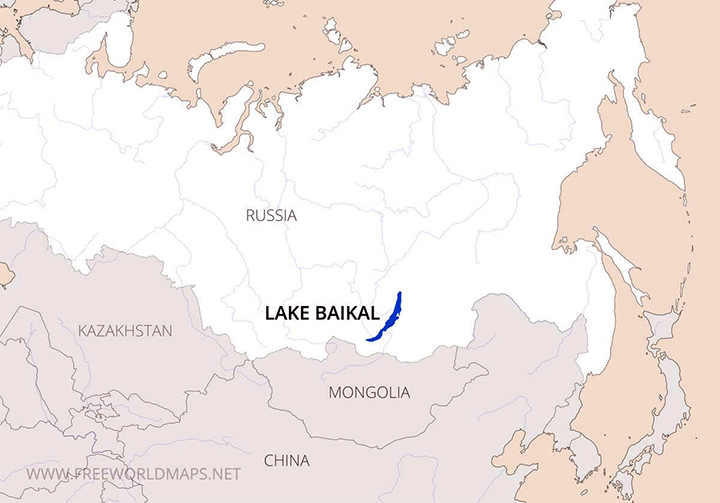Baikal-GVD Telescope | 19 Apr 2021
Why in News
Russian scientists have launched one of the world’s biggest underwater neutrino telescopes called the Baikal-GVD (Gigaton Volume Detector) in the waters of Lake Baikal, the world’s deepest lake situated in Siberia.
- The construction of this telescope, which started in 2016, is motivated by the mission to study in detail the elusive fundamental particles called neutrinos and to possibly determine their sources.
Key Points
- About Baikal-GVD Telescope:
- It is one of the three largest neutrino detectors in the world along with the IceCube at the South Pole and ANTARES in the Mediterranean Sea.
- GVD is designed to detect high-energy neutrinos that may have come from the Earth’s core, or could have been produced during nuclear reactions in the Sun.
- It will aid scientists’ understanding of the origins of the universe since some neutrinos were formed during the Big Bang, others continue to be formed as a result of supernova explosions or because of nuclear reactions in the Sun.
- About Fundamental Particles:
- The universe is made of some fundamental particles that are indivisible. These particles can be classified into quarks and leptons.
- But this only applies to “normal matter” or the matter that scientists know that 5% of the universe is made up of.
- There has been the discovery of over 12 such quarks and leptons, but three of these (protons, neutrons and electrons) make what is referred to as the building block of life– the atom.
- Protons (carry a positive charge) and neutrons (no charge) are types of quarks, whereas electrons (carry a negative charge) are types of leptons.
- In different combinations, these particles can make different kinds of atoms, which in turn make up molecules that form everything– from a human being, to a mobile phone, a planet, and so on.
- Studying what humans and everything around them is made up of gives scientists a window into understanding the universe a better way.
- The universe is made of some fundamental particles that are indivisible. These particles can be classified into quarks and leptons.
- About Neutrinos:
- Neutrinos (not the same as neutrons) are also a type of fundamental particle.
- Neutrinos belong to the family of particles called leptons, and there are three types of neutrino, i.e. electron-neutrino, muon-neutrino, and tau-neutrino.
- They are the second most abundant particles, after photons, which are particles of light.
- However, they are not easy to catch, this is because they do not carry a charge, as a result of which they do not interact with matter.
- Natural sources of neutrinos include the radioactive decay of primordial elements within the earth, radioactivity in the sun, cosmic interactions in the atmosphere and others.
- One way of detecting neutrinos is in water or ice, where neutrinos leave a flash of light or a line of bubbles when they interact. To capture these signs, scientists have to build large detectors.
Big-Bang Model
- It is a widely held theory of the evolution of the universe.
- Its essential feature is the emergence of the universe from a state of extremely high temperature and density—the so-called big bang that occurred 13.8 billion years ago.
Supernova
- Supernova is a powerful and luminous stellar explosion.
- This astronomical event occurs during the last evolutionary stages of a massive star or when a white dwarf is triggered into runaway nuclear fusion.
Quarks
- Quark is a fundamental constituent of matter and is defined as an elementary particle.
- The quarks combine to produce composite particles called hadrons, the most stable of which are neutrons and protons that are the components of atomic nuclei.
Lepton
- Lepton, any member of a class of subatomic particles that respond only to the electromagnetic force, weak force, and gravitational force.
- They are not affected by the strong force.
- Leptons are said to be elementary particles; and can either carry one unit of electric charge or be neutral.

